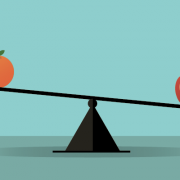Real Estate and Marketing Automation – Two Like Minds
It’s no surprise that many businesses new to marketing automation have a hard time thinking about their sales cycle. When you start throwing words around like “Sales funnel” or refer to “top of the funnel” activities, some people immediately tune out.
Even large business executives need to know what their sales cycles look like. Taking back power over your sales process will allow you to not only bring in more leads, but to increase the productivity of your own business and keep you in the know about who’s buying what. Plus, customers who go through a streamlined funnel before they become a conversion know what to expect when they sign on with you – which makes it easier to deliver your services. Let’s look at how real estate and marketing automation are two like minds.
The Real Estate Comparison
The best way to think about multi-channel marketing and marketing automation is to consider the real estate business. Realty professionals, like all other business owners, struggle with keeping their prospects in line, finding new ways to market and keeping their message consistent. They also might struggle with segmenting their lists – as in, separating past prospects from current ones and knowing when is best to reach out to these audiences.
Because the segmentation of their customer lists and the diversity of their marketing channels, real estate professionals are great candidates for demonstrating the power of marketing automation.
Filling out the Funnel
For starters, there are a number of entry points real estate pros may have to their sales funnel. A brief list:
- Yard signs
- Local papers with “for rent” or “for sale” real estate classifieds
- Online MLS and other listings
- Word of mouth
- Craigslist
There are many others, but you get the point. All of these entry level inquiries have the possibility of leading to a sale and they all result in a customer the real estate pro can add to his or her list for future marketing. However, each of the above entry points has a conversion rate over time – or, an average amount of times customers who find the Realtor using these methods becomes a sale.
It may not seem important at first, but here’s why understanding the funnel is crucial to the real estate pro in our example. Let’s say this Realtor is spending $500 monthly having an office assistant create Craigslist posts and $700 monthly to list on custom realty websites.
After getting marketing automation in place, the Realtor is able to see what rate of people in each entry point method actually closes. It turns out that over 40% of his customers come from past customer referrals, 2% come from Craigslist and 10% come from online listings.
If this is the case, the Realtor needs to put more budget into courting previous customers – holding happy hours, open houses and free events where past homeowners get VIP treatment – as opposed to shelling out big bucks for online listings. Once a professional can see where budget is going, it makes sense to only allocate budget to areas that he or she knows is working.
If you don’t have an understanding of what your company’s funnel is or how it works, marketing automation can help you! Talk to one of our Revenue Success Managers at Lead Liaison today to clearly define your funnel and put better conversion streams into practice.




